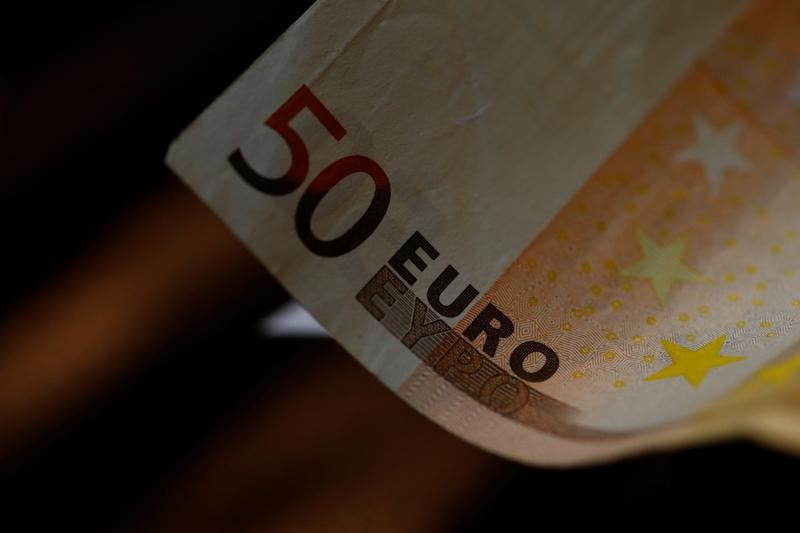Investing.com -- The euro slid to a new two-week low against the dollar in early trading in Europe Thursday as traders braced for more gloomy headlines about the economic outlook.
German industrial output data have already set the tone, showing a drop of 0.4% in December rather than the 0.7% rise predicted. Spain meanwhile reported output fell 6.2% year-on-year in December, far worse than forecasts for a 2.3% decline. The contrast with the U.S. was underlined Wednesday by comments from Federal Reserve Chairman Jerome Powell, who said the economy was in a 'good place' with solid growth and low unemployment.
At 03:30 AM ET (08:30 GMT), the single currency was at $1.1350, down -0.1% on the day.
The main focus in Europe Thursday will be the EU Commission’s new economic forecasts, which are expected to be revised down sharply, especially as regards Italy.
That’s important because the uneasy peace agreed between the EU and the Italian government over the latter’s budget was based on some optimistic forecasts about growth this year. A lower growth forecast will mean harsher scrutiny of the populist coalition’s budget plans.
Elsewhere, the British pound fell below $1.2900 for the first time in over two weeks on the rising risk of a ‘no-deal Brexit’. EU Council President Donald Tusk sparked controversy Wednesday by saying there was “a special place in hell” for those who announced Brexit “without even a sketch of a plan” for delivering it. The comments have inflamed sentiment in the U.K. and have hardened opposition to the withdrawal agreement negotiated by the EU and the government of Prime Minister Theresa May.
Elsewhere Thursday, the Bank of England is expected to again vote unanimously to keep its key interest rate unchanged when its Monetary Policy Committee meets. The decision and accompanying statement are due at 07:00 AM ET (12:00 GMT).
There were more signs of the global economic slowdown taking its toll overnight. The Reserve Bank of India, under its new governor Shaktikanta Das surprisingly cut its key rate by 25 basis points to 6.25%, a boost for Prime Minister Narendra Modi ahead of upcoming elections, but the rupeewas largely stable at 71.415.
The USD/JPY pair continued to flirt with the 110 level, without seriously breaking above it.
Meanwhile, the kiwi dollar tumbled over 1% to $0.6744, after a raft of weak economic data that prompted speculation about future interest rate cuts.
"The figures present a more modest picture of the labor market over the last year," said Michael Gordon, senior economist at Westpac. "Soft jobs growth and hours worked increase the risk of another weak economic print in the December quarter."
The Reserve Bank of New Zealand (RBNZ) holds its first policy meeting of the year next week.
- Reuters contributed to this report.
